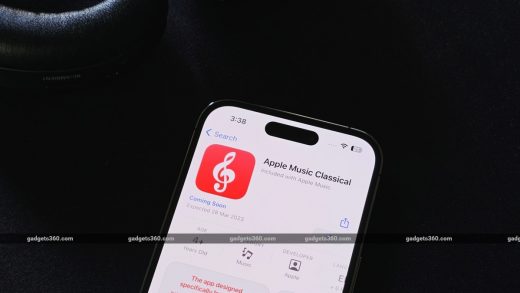:format(webp)/https://www.thestar.com/content/dam/thestar/entertainment/books/2023/01/18/royal-power-struggles-who-really-runs-the-house-of-windsor/bucking_palace_gates_closed.jpg)
While most of the headlines following the release of Prince Harry’s memoir, “Spare,” centre on the book’s two main sets of foes — the British press as well as his family, including his brother/“arch-nemesis” Prince William and stepmother/“villain” Queen Camilla — there’s also a third, more anonymous group of individuals to whom Harry can’t hide his antipathy: the bureaucrats who work for the House of Windsor.
In “Spare,” he blames the three private secretaries of the late Queen, Charles and William, for the harsh terms imposed on his exit from royal life. “I disliked these men, and they didn’t have any use for me. They considered me irrelevant at best, stupid at worst. Above all, they knew how I saw them: as usurpers,” he writes. In April 2022, he told NBC, “I’m just making sure she is protected and got the right people around her,” after visiting his grandmother. Insiders believe that dig was aimed at her private secretary, Edward Young.
For as long as monarchs have held court, there have been courtiers managing their lives. While the term “courtiers” may conjure up daguerreotype images of moustached men in knee breeches, today’s versions are seasoned professionals, often from the foreign service, who exert influence while living in the shadows of their bosses, the working members of the House of Windsor. Now, two books released this month in Canada offer windows into that rarefied world from completely distinct points of view — the ire and raw emotion in “Spare” and a more dispassionate analysis in “Courtiers: Intrigue, Ambition, and the Power Players Behind the House of Windsor,” by Valentine Low, the Times’ royal correspondent.
The relationship between royal and private secretary is both personal and professional, Low explains. “They are almost joined at the hip,” he explains in an interview with the Star ahead of publication. “They are their gatekeeper; they control who gets access to their principal; and they are their chief of staff, their right-hand person.” Part of that closeness stems from the reality that most royals have just a handful of people working for them. So, it’s often the private secretary who writes speeches, arranges their public engagements and gives advice.
Prince Harry and his wife are famously suspicious of the motives of palace staff. “There’s the family, and then there’s the people who are running the institution,” complained Meghan, Duchess of Sussex, in a now-famous televised interview with Oprah Winfrey in 2021. In “Spare,” Harry saw the three most senior private secretaries of the Queen, Charles and William as Machiavellian usurpers to their royal bosses: “Deep down, I feared that each man felt himself to be the One True Monarch, that each was taking advantage of a Queen in her nineties, enjoying his influential position while merely appearing to serve.”
In contrast, palace insiders believe power ultimately rests with the Windsors: “Advisers advise and royals decide,” one told the Telegraph in January. In the 1980s, the Queen’s private secretary broached the idea of the monarch paying income tax on her personal wealth as a way to avoid constant sniping about how much the monarchy costs taxpayers. His proposal was shot down by the Queen, who finally changed her mind at the end of her annus horribilis of 1992.
A long-simmering problem that periodically erupts is how this multi-generational family business organizes itself. “Each household wants to be a self-ruling independent republic while acknowledging the overall sovereignty of the monarch.” Low explains, which means that “when you get a crisis, it’s difficult for the centre to take control.” The rivalries between royals and their courtiers can be brutal, as witnessed during the War of the Wales between Charles and Diana, which ended only after the Queen demanded that they divorce. More recently, she waited until after Prince Andrew sat down in November 2019 self-immolating interview with the BBC’s Newsnight about his relationship with Jeffrey Epstein before finally stripping him of his royal duties.
At the same time, royal courtiers can be famously close-mouthed. While Harry accuses staff, especially those working for other royals, of leaking stories to the press, one particularly negative story about his wife didn’t break for 2 1/2 years. It took until early 2021 for Valentine Low to reveal in the Times that the Sussexes’ then-communications secretary, Jason Knauf, had written an email to his boss in October 2018 detailing what he believed was bullying behaviour by Meghan toward staff. (To date, the Sussexes haven’t sued either Low or the Times over his revelations, which the Sussexes condemned as a “smear campaign.”)
Palace courtiers didn’t seem to know how to react to such serious allegations involving a royal. Complicating matters further, it occurred as royal households were already dealing with a cultural inertia that had set in as they neared the end of the reign of a boss who eschewed modernization for the slower pace of evolution. “The DNA of the palace is rooted in the 1950s and it hasn’t changed,” one source explained to Low. In particular, its lack of diversity is notable.
“The palace is a pale, male, stale environment,” says Low. None of the principal private secretaries who served Elizabeth II, Charles or William have been a woman or a person of colour, he reports. Overall, only 8.5 per cent of royal household staff are from ethnic minorities, according to annual diversity data released by Buckingham Palace in June 2021, compared to 13 per cent of the British population.
Some royal disasters are unavoidable. In 1927, Alan Lascelles was so horrified by the unfitness of his principal, the future King Edward VIII, that he confessed to Prime Minister Stanley Baldwin that when the prince was horse racing, he “can’t help thinking that the best thing that could happen to him, and to the country, would be for him to break his neck.” “God forgive me,” replied Baldwin. “I have often thought the same.” Nine years later, the abdication scandal nearly broke the throne.
While the crisis pitting the Sussexes against the royals and their staff doesn’t rise to the level of that calamity in 1936, it has had its share of dramatic moments, especially when Harry tried to see his grandmother after returning from Canada in January 2020 to discuss how he and Meghan wanted to reimagine their roles. Suddenly, the Queen’s diary was full. “Is he in the room with you, Granny?” asks Harry in “Spare,” referencing Edward Young. The Queen doesn’t respond. While Harry saw interference, Low says that she was taking Young’s advice to wait for a proper meeting with all the family and their courtiers: “Ultimately, the final decision was taken by the Queen, on advice, but it was the Queen’s decision.”
Even after Elizabeth II’s death, change doesn’t come quickly to British palaces. “It is like a tanker, turning it around takes a long time,” Low says. Now, as the coronation approaches, the households of King Charles III and Prince William “are trying to convey an image of harmony. For the moment, all is peace between the King and his heir — not least, perhaps, because they face a common problem” in Prince Harry, he explains. “But it won’t last forever.”
JOIN THE CONVERSATION
:format(webp)/https://www.thestar.com/content/dam/thestar/entertainment/books/2023/01/18/royal-power-struggles-who-really-runs-the-house-of-windsor/courtiers.jpg)
:format(webp)/https://www.thestar.com/content/dam/thestar/entertainment/books/2023/01/18/royal-power-struggles-who-really-runs-the-house-of-windsor/spare.jpg)


